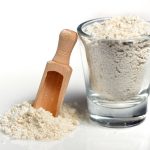It’s not a pleasant experience seeing insects flying out of boxes of food but it happens all to frequently. One insect, The Indian Meal Moth (Plodia interpunctella [Hűbner]) has made a name for itself as a “pantry pest”. The flying insect indicates that the larvae were in the stored food, probably eating it and possibly forming one of the ingredients in our daily diet.

The larvae feed on a variety of stored foodstuffs and commodities such as processed foods generally, cereal grains, flour, pulses and beans, meals, and dried fruits (Mohandass et al., 2007). It is now a major economic nuisance – a real pest in commercial food processing facilities and warehouses (Niakousari et al., 2010). Indian meal moths are called “penetrators” because of their sharp mandibles that easily make small holes and tear plastic films (Highland, 1984; Chung et al., 2011). Infestation of finished food products by Indian meal moth may result in the serious rejection of the products by consumers (Campbell et al., 2002).
Indian meal moth larvae have to be repelled because they can readily get past the barriers in conventional food-packaging materials (Browditch, 1997). P. interpunctella infestation is commonly inhibited using synthetic pesticides such as methyl bromide and phosphine but the use of such insecticides raises concerns. Methyl bromide unfortunately is an ozone-depleting agent that is widely banned in many places (Fields and White, 2002), and stored products accumulate such pesticides as these when treated. Carbon monoxide gas is a useful repellent activity against the larvae (Jo et al., 2013; Kim et al., 2013). The latest research is looking at microencapsulated cinnamon oil as a natural repellent.
References
Browditch, T.G. (1997) Penetration of polyvinyl chloride and polypropylene packaging films by Ephestia cautella (Lepidoptera: Pyralidae) and Plodia interpunctella (Lepidoptera: Pyralidae) larvae, and Tribolium confusum (Coleoptera: Tenebrionidae) adults. J Econ Entomol 90 pp. 1028–31.
Campbell, J.F., Mullen, M.A., Dowdy, A.K. (2002) Monitoring stored-product pests in food processing plants with pheromone trapping, contour mapping, and mark-recapture. J Econ Entomol. 95 pp. 1089–101.
Chung, S.K., Seo, J.Y., Lim, J.H., Park, H.H., Kim, Y.T., Song, K.H., Park, S.J., Han, S.S., Park, Y.S., Park, H.J. (2011) Barrier property and penetration traces in packaging films against Plodia interpunctella (Hubner) larvae and Tribolium castaneum (Herbst) adults. J Stored Prod Res 47 pp. 101–5.
Fields, P.G., White, N.D.G. (2002) Alternatives to methyl bromide treatments for stored-product insect and quarantine insects. Annu Rev Entomol 47 pp. 331–59.
Highland, H.A. (1984) Insect infestation of packages. In: Baur FJ, editor. Insect management for food storage and processing. St. Paul, Minn.: American Assn. of Cereal Chemists Intl. pp. 309–20.
Jo, H.J., Park, K.M., Min, S.C., Na, J.H., Park, K.H., Han, J. (2013) Development of an anti-insect sachet using a polyvinyl alcohol-cinnamon oil polymer strip against Plodia interpunctella. J Food Sci 78:E1713–20.

There are some really good web-sites out there which explain the best ways to deal with this really unpleasant insect. I have been looking for insecticides to use with cracks and crevices but not really found anything useful. I’d be interested to know if you have any leads ?